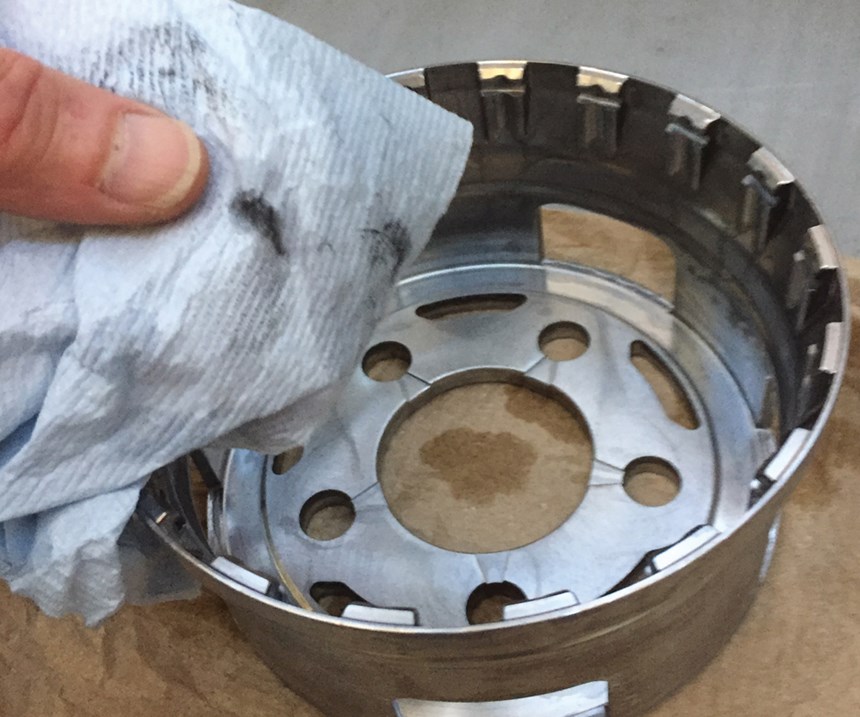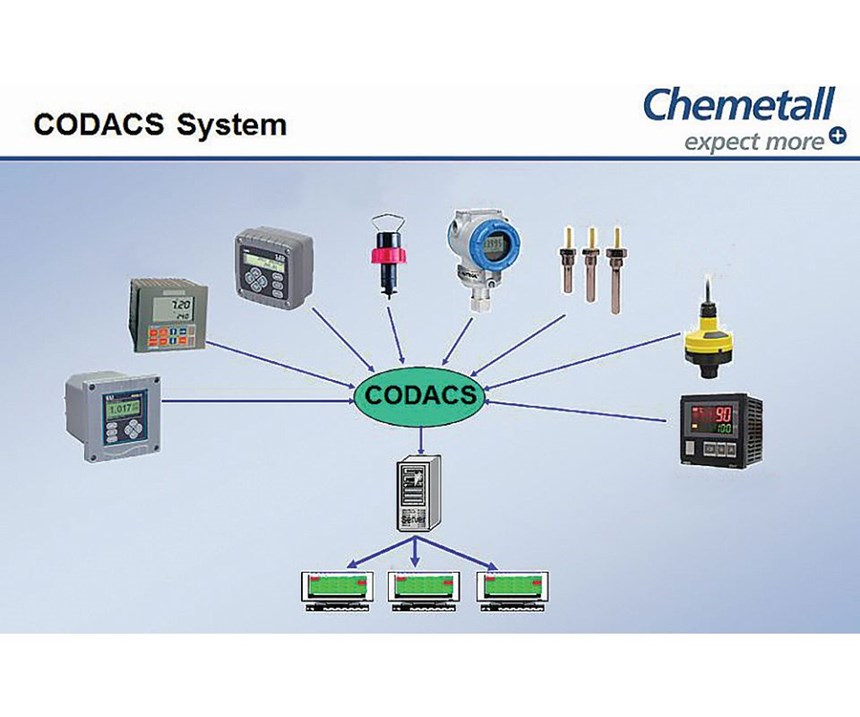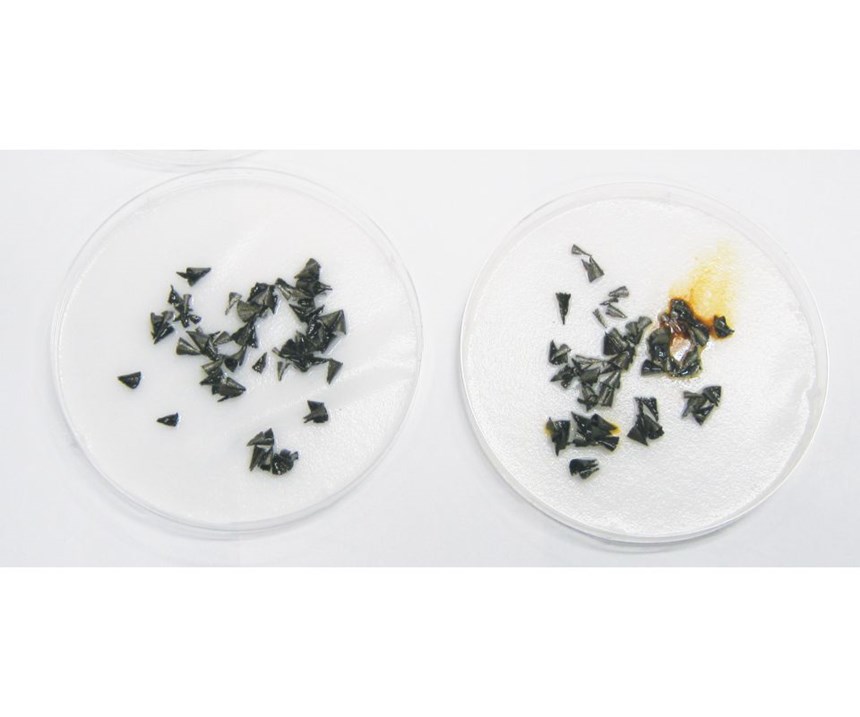Optimizing Aqueous Cleaning Requires Proper Design and Maintenance
A well designed and proactively managed aqueous washer system provides premium performance.
Effective cleaning of manufactured parts is the critical foundation of a manufacturing operation. Optimum performance of an aqueous washer can be readily achieved if there is an understanding of both the capabilities and limitations of the chemistry, along with the mechanics. Proper equipment design, coupled with appropriate product selection and adequate process control, assures sustainable and cost-effective performance. A robust preventive maintenance program makes the performance consistent over time.
An aqueous cleaning system must provide reliable removal of all soils, which prepares parts for the subsequent operation. To find the right cleaning process for an application, knowing the level of cleanliness is a must. Over-cleaning may be costly, but under-cleaning, or inadequate corrosion protection, will put the entire process at risk. Therefore, it is important to find a proper balance. The following information explains how each area of a process should be optimized.
System Design and Mechanical Action
When designing a cleaning system, the required productivity rates and configuration of the part being cleaned should be addressed. Parts with recessed areas or blind holes require immersion programs to allow complete contact with the chemistry. The highest productivity is obtained with a spray washer and when a belt or conveyor is used.
Regardless of the design, mechanical action is a key parameter of aqueous cleaning. This can be achieved with impingement in spray washers, eductor agitation in the immersion process and with ultrasonic energy. The mechanical action should be maximized and maintained during operation.
Using TACT
Four key “pillars” that a cleaning program relies on and impacts cleaning efficiency are referred to as “TACT,” by Chemetall. TACT stands for contact Time, physical Action, product Concentration and solution Temperature. If one or more of these TACT parameters change, the remaining must be adjusted to optimize the overall cleaning performance.
Chemistry Selection
Identifying the ideal cleaning and rust preventing chemistry can be challenging. First, the chemistry selected must be compatible with the substrates being cleaned and with the washer construction materials. It also needs to perform well in the washer design. Alkaline cleaners are compatible with ferrous alloys, and when properly formulated, they are compatible with aluminum and galvanized surfaces also. Alkaline chemistry is extremely efficient for removing organic soils such as oils, waxes and greases—typical constituents found in many metalworking and rust preventing fluids.
However, where inorganic soils are present, such as oxides from welding, plasma cutting or corrosion, often an acidic cleaner is more effective. Some applications require multiple stage programs where both alkaline and acid chemistries are used to effectively process a part. Before choosing an aqueous washer, it’s a good idea to perform small-scale process simulations in a laboratory or pilot environment using real production parts. Doing so can determine the optimal cleaning system for an application.
Identify, Measure and Control
Key Performance Indicators (KPIs) that are applicable to a process need to be identified, measured and controlled. KPIs include metrics to determine product concentrations, rinse quality, soil loads, part cleanliness and washer performance (validating the mechanical action). KPIs should be monitored on a regular basis and suitably logged. Collecting these data is a good way to recognize performance trends. An operation manual documenting these procedures should be developed, taught and used as part of a continuous improvement program.
Monitoring and automation technology increases a washer’s effectiveness. Technology can be as simple as using a sensor or probe to measure the solution and activate the metering pump, or it can be more sophisticated systems with multiple inputs collecting data and displaying it in multiple locations. Some units allow for data logs and facilitate troubleshooting with real-time alert systems for the operator when a problem occurs.
Soil Management
To have effective soil management, operators must understand the nature of the soils present on the work, and how they interact with the cleaning solution. Soil loading should be measured and monitored, and the levels should be reduced whenever possible. Ideally, the cleaning compound will reject the oils and soils, allowing removal on a continuous basis.
Oil skimmers and coalescing units are typically used to remove separated oils from cleaner baths. Coalescing units outside the washer are effective, because they benefit from temperature reduction and reduced solution turbulence, which will maximize the separation of the oils. Operators should draw the cleaning solution to the coalescing unit from an area of maximum soil density. Units with floating “heads” are useful for measuring the amount of debris contained in the fluid.
In immersion processes where parts are lifted from the tank, operators should ensure that the parts are not pulled through the floating oils, otherwise redeposition will occur. In such systems, an emulsifying chemistry is a better choice.
Filtration can also be used on cleaning systems to remove particulate debris such as metal chips or insoluble material.
Effective soil management will contribute to consistent performance and will extend solution life, improve quality and reduce waste.
System Maintenance
On a routine basis, ensure that the mechanical action of the washer is fully operational, and that the action is maximized. In spray washers, the pressure needs to be monitored, along with routine inspection and proper spray nozzle cleaning. Sludge and scale in the washers, especially around ultrasonic transducers and heating elements, must be properly managed to maintain efficiency.
Rust Protection
Aqueous systems can incorporate rust prevention agents to protect against corrosion, both in-process and long term. Proper product selection, maintenance and an understanding of the incoming water quality are keys to rust prevention.
Rust Preventive Selection
Selecting a rust preventive fluid requires consideration of the process, the substrates, and the degree of protection required, along with subsequent operations (if any). Many formulations exist where the product is capable of cleaning and providing rust protection simultaneously, as long as the chemistry is not rinsed. Ideally, there will be multiple stages in the process, where the parts can be fully cleaned (and the soils confined to the cleaning stage), then rinsed, followed by using the rust preventive fluid. When systems are limited to one or two stages, the soils building up and remaining on the surface of the parts should be closely monitored. This will impact both the rust protection and the performance of subsequent operations, such as bonding.
Understand that seasonal changes impact corrosion protection programs. In summer months when humidity levels are highest, systems require adjustments to ensure success.
Water Chemistry
The water used in an aqueous system will have a direct impact on performance and maintenance requirements of the unit. In general, low hardness water is always preferred. This will reduce the formation of hard water soaps that can consume rust-inhibiting components, along with forming scale and sludge. However, when using aqueous rust inhibitors, the chloride and sulfate levels are concerning. Chlorides and sulfates will accelerate corrosion and become more problematic over time. As water evaporates, the remaining contaminants are condensed, increasing the water hardness within the solution. These levels need to be monitored and held in check, using purified water and appropriate recharging of the final stage. All of the solids dissolved in the incoming water will ultimately be dried on the parts, affecting the results.
The pH of the aqueous rust inhibitor stage needs to be maintained within the appropriate range recommended by the supplier. Even a slight reduction in alkalinity can reduce the corrosion resistance performance.
Cast iron chip testing can be an effective KPI for the rust inhibitor solution. This can be done on site following the ASTM D 4627-12 procedure. The collected sample can be diluted to 50 percent in fresh water to create a stressed condition, reducing the product concentration to provide an indication of performance deterioration before the process actually fails. Humidity cabinet testing is effective for corrosion protection.
Drying
Prior to packaging, parts must be dried thoroughly. Ovens, forced heated air flow, air knives or drying media are all effective drying methods. Heating the process solution in the final stage will accelerate the drying process, but temperature limits should not be exceeded for the specific chemistry. Parts must not be packaged or sealed if water remains, otherwise corrosion will result.
Conclusions
Aqueous parts washing systems can provide great value, flexibility and reliable performance when properly used. Optimum programs begin with successful design and implementation, followed by careful maintenance and process control. By understanding the capabilities and limitations of the chemistry, and the overall process, an efficient and sustainable system can be implemented while reducing the overall cost of operating the system.
Published in the June 2017 issue.
Read Next
Emerging Leaders Nominations Now Open
Here’s your chance to highlight a young person in your manufacturing business who is on the path to be a future leader moving your company forward.
Read MoreA Tooling Workshop Worth a Visit
Marubeni Citizen-Cincom’s tooling and accessory workshop offers a chance to learn more about ancillary devices that can boost machining efficiency and capability.
Read More5 Aspects of PMTS I Appreciate
The three-day edition of the 2025 Precision Machining Technology Show kicks off at the start of April. I’ll be there, and here are some reasons why.
Read More










.jpg;maxWidth=300;quality=90)









